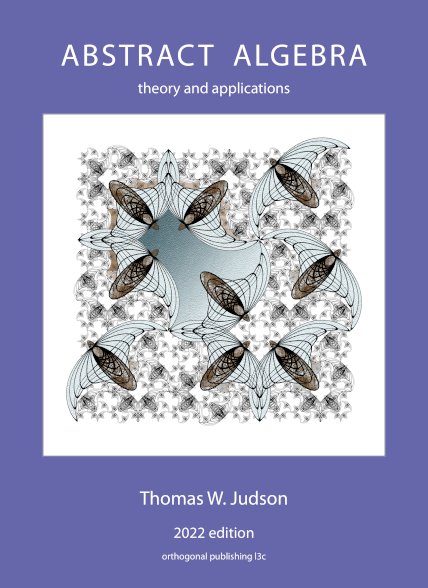Section 3.1 Integer Equivalence Classes and Symmetries
Let us now investigate some mathematical structures that can be viewed as sets with single operations.
Subsection The Integers mod
The integers mod
We have already seen that two integers
When no confusion can arise, we will use
Example 3.2.
Most, but not all, of the usual laws of arithmetic hold for addition and multiplication in
Proposition 3.4.
- Addition and multiplication are commutative:
- Addition and multiplication are associative:
- There are both additive and multiplicative identities:
- Multiplication distributes over addition:
- For every integer
- Let
Proof.
We will prove (1) and (6) and leave the remaining properties to be proven in the exercises.
(1) Addition and multiplication are commutative modulo
(6) Suppose that
Conversely, suppose that there exists an integer
Subsection Symmetries
A symmetry of a geometric figure is a rearrangement of the figure preserving the arrangement of its sides and vertices as well as its distances and angles. A map from the plane to itself preserving the symmetry of an object is called a rigid motion. For example, if we look at the rectangle in Figure 3.5, it is easy to see that a rotation of
Let us find the symmetries of the equilateral triangle
Notice that this particular permutation corresponds to the rigid motion of rotating the triangle by
A natural question to ask is what happens if one motion of the triangle
This is the same symmetry as
Notice that in the multiplication table for the symmetries of an equilateral triangle, for every motion of the triangle

